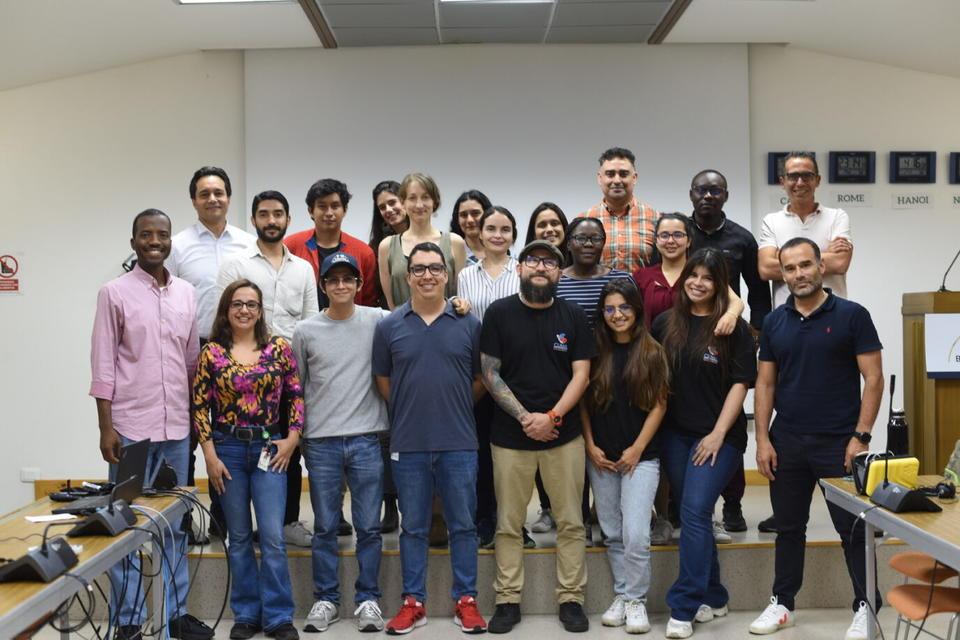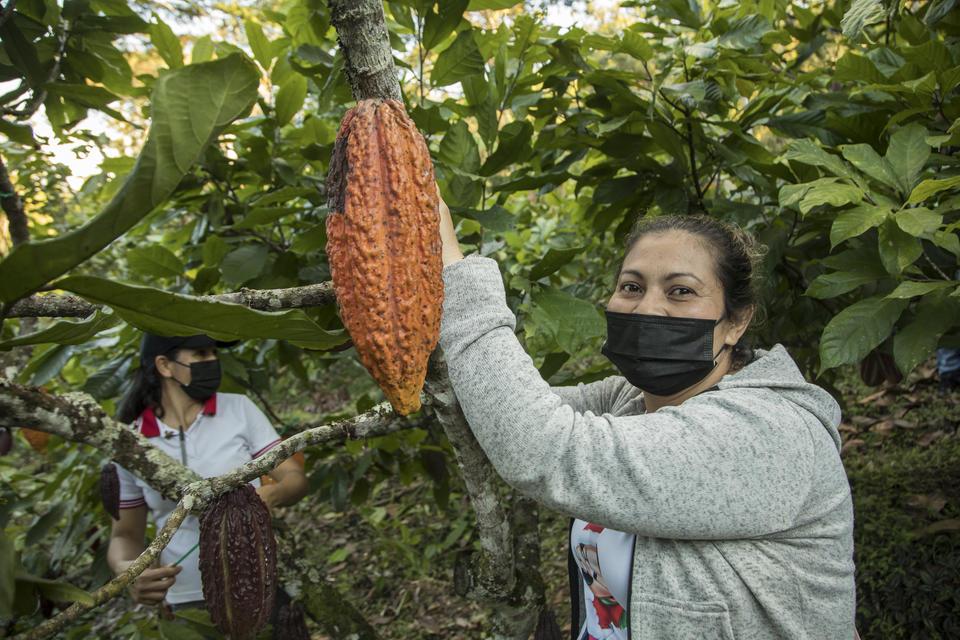Blog The blissful taste of Andaki

This is really good!
That’s my prompt review of the Andaki chocolate bar after taking a bite off it while drinking Colombian coffee.
I then rushed to the room next door to ask my colleague, Diana Gutierrez, the steward of Andaki chocolate bars in our team, if she had more of the chocolate. She replied that she’d give me one once we get a new supply; she delivered on that promise a day later.
We procured the Andaki chocolate bars from cocoa producers whom we’ve been collaborating with in the Colombian department of Caqueta for several years now. The producers dwell in Belen de los Adaquies, a municipality that lies in the Amazon región.
I long to go back to that area because I felt a sense of peace while being there. I remember the fresh, cool breeze surrounding me as I spoke with some of the farmers as part of my Ph.D. research project for the University of Copenhagen.
If it’s not yet obvious, I’m a fan of Colombian chocolate. Whenever I would attend events outside Colombia, I would tell people I would meet that when they get to visit Colombia, to make sure to try its chocolate. I liken the Colombian cocoa to Colombian coffee in that just like the latter, the taste of cocoa will differ by origin.
My interest in Colombian cocoa goes beyond the palate. I focus my research on the Colombian cocoa value chain, particularly on institutions that can ensure the environmental sustainability of the chain.
Together with colleagues in the team that Augusto Castro-Nunez, the senior scientist who heads the scaling work package of the CGIAR Initiative on Low-Emission Food Systems, oversees, I find that economic incentives exist in Colombia for sustainable cocoa production. Yet due to land tenure issues, cocoa producers, most of whom are smallholders, could only qualify for some of them.
Our team, housed within the Multifunctional Landscapes sublever headed by Lou Verchot at the Alliance of Bioversity International and CIAT, is working on addressing the challenge of optimizing access by these producers to existing green finance. We are, for now, focusing on obras por impuestos, which allows Colombian companies earning a certain gross income per year to invest part of the taxes attached to that income into sustainable development projects in conflict-affected communities in the country.
Those projects can involve payment for ecosystem services. Recently, thanks to the work of another colleague, Carlos Borda, obras por impuestos can now fund activities of producer organizations that have earned green business seals from the Colombian government.
Carlos worked with the Colombian environment ministry to adjust the regulation on obras por impuestos so green business activities, such as post-harvest processing, could be funded. Adequate post-harvest facilities are a must to ensure the quality of cocoa beans, thus enabling farmers to command a good price for their produce.
If cocoa producers can gain access to financial incentives, we can expect more in the market of the likes of Andaki, whose raw material – cocoa beans – was produced without deforestation. This potentially would help enable Colombia to supply to markets that require zero-deforestation cocoa.
That said, we know Colombia faces other challenges to access international cocoa markets. One is production, and another is the level of cadmium in Colombian cocoa. Addressing these would require restoring degraded land, among other actions. Cultivating cassava, aka “Rambo” root, could be the answer, as we proposed in a paper some time ago.
The shape of the Andaki bar reminded me of a certain chocolate brand, I told Diana. But the comparison ends there. The taste of Andaki is distinct: For me, it’s the perfect blend of tartness and bitterness that goes perfectly with hot Colombian coffee. That’s the taste of bliss, I say.
The CGIAR Initiative on Low-Emission Food Systems and AgriLAC Resiliente have been supporting the work we have been doing with the producer association that developed Andaki. See more information the CGIAR Initiative on Low-Emission Food Systems here and AgriLAC Resiliente here.
Photo credit: A perfect combination: Colombian coffee with Andaki / Ma. Eliza J. Villarino
The Team

Augusto Castro-Nunez
Senior Scientist Low-Emissions Food Systems



